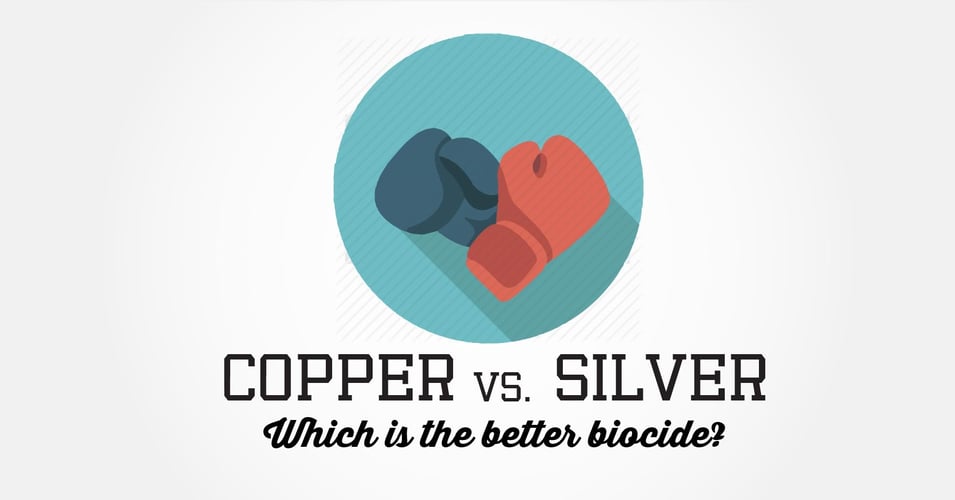Silver vs Copper: Which is the better biocide? (Part 3)

Our bodies are incredible feats of balance, or in biological terms, homeostasis. Completely independent of our conscious minds, our cells are taking in nutrients, reproducing, building proteins, assembling enzymes, all to regulate our organs and systems. Most of the work our bodies perform just needs caloric intake. All the building blocks are there, our systems just need energy. But some of those processes require additional elements that we must ingest specifically for that purpose. These non-organic micronutrients are a variety of metals, since metals' ability to oxidize helps catalyze important biological reactions. But our bodies are not built to tolerate all metals. Some metals can even be toxic. Today we'll explore the relative safety of copper and silver in terms of toxicity to humans.
Toxicity to Humans
Neither silver nor copper poses a significant poisoning risk. Of course, in excess, any material can be toxic. It comes down to how much the body can tolerate.
Silver
Silver serves no biological purpose, so any ingested silver has to be removed by the body. This removal is typically handled by the liver, which expels the silver through bile. Silver is not easily processed, however, as it is not able to be used by the body and must simply be removed. As a result, silver can collect in the liver and then other organs in the body. Individuals who consume excessive silver (it is considered misbranded if marketed as an alternative health product) can acquire a condition called argyria, in which silver deposits collect throughout the body, and can even turn skin and eyes blue.
There is some research that demonstrates that silver could pose a threat to human mitochondrial DNA (DNA deep in our cell nucleus), as this DNA is very similar to bacterial DNA. Mitochondrial DNA in the liver is particularly vulnerable, as the liver is the first organ where silver that cannot be expelled from the body collects. Mitochondrial DNA is responsible for creating energy for the cell, allowing it to perform all of its functions.
Copper
Copper, on the other hand, is an essential trace micronutrient, necessary for many key metabolic processes. Copper is a part of 18 known enzymes where it serves as an oxidizer, breaking apart organic molecules so that the body can use them to build organs and muscles as well as regulate the nervous system and brain function. Copper also plays a role in decreasing oxidative stress by metabolizing the reactive oxygen species that can damage cells.
Copper is required by humans to live, and as a result, is handled very safely and efficiently by our bodies. Any excessive ingestion of copper is regulated by cell mechanisms built for just that function.
So who wins when it comes to safety for humans? Copper Copper must come out on top, since our bodies can use it and process it just as any other essential nutrient.
There is little chance of a person ingesting excessive silver if they do not take it on purpose, since silver does not occur in any of our food sources. The introduction of silver-containing products, however, is pushing research into the area of measuring the impact of this extra silver coming into contact with our bodies and in our drinking water. This is particularly an issue with silver nanoparticles, which are more easily leached into the environment.
Copper must be ingested for health, but it occurs in a number of our food sources naturally, such as in whole grains, dark green vegetables, nuts, and seafood. In fact, 4 oz. of dark chocolate contains 100% of your daily intake of copper! Sweet!
Editor's Note: This post was originally published in October 2015 and has been updated for freshness, accuracy and comprehensiveness.
![EOScu Logo - Dark - Outlined [07182023]-01](https://blog.eoscu.com/hubfs/Eoscu_June2024/Images/EOScu%20Logo%20-%20Dark%20-%20Outlined%20%5B07182023%5D-01.svg)

![[infographic] Copper vs. Silver: Which is the better biocide? Download and share!](https://no-cache.hubspot.com/cta/default/216314/interactive-178295793017.png)


